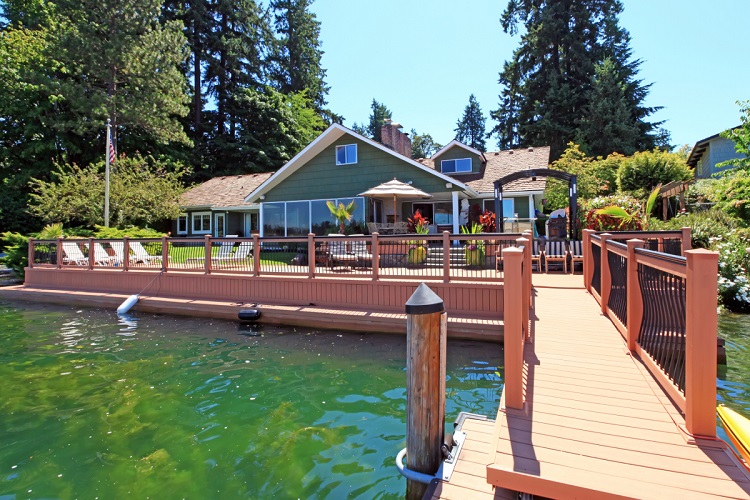Lakes and other water bodies such as ponds are of great benefit and serve many purposes. They are water sources for crops, fish and animals like wildlife, livestock and birds. They can also be converted for recreational purposes like fishing, water sports, or just relaxation for family and friends. A properly maintained lake can also add value to your property, as Karina Lakefront explains on https://www.karinalakefront.com/maintenance-plans/
When left unattended, lakes lead to the buildup of weeds, algae, and stagnation and bad odors. This is due to nutrient pollution where there is an accumulation of too many nutrients, mainly nitrogen and phosphorus. Often, these elements act as fertilizers, causing excessive growth of algae in your lake. You need to maintain your lakes and lake fountains in a proper manner to prevent all this.
Nitrogen and phosphorus mainly come in the form of animal waste, factory by-products disposed into the lake, agriculture fertilizers, sewage runoff, fossil fuels, soaps and detergents. This has led to a negative impact on most freshwater sources, raising concern about the health and future of water bodies.
While you can treat weeds and algae blooms with herbicide or algaecide, these treatments use toxic products. The toxicity of the substances in these products also has a downside. Since there is the use of chemicals, the chemical can end up leaving your lake or water body in a worse state than it was before. The best option is to switch to natural remedies.
How to Naturally Maintain Lakes on Your Property
An all-natural program to treat the main issues causing your pond problems has many benefits. It’s not just safe for animals, fish, humans and crops, but also the environment. It will also leave your lake clean, clear and looking well with no toxic residues, reducing lake maintenance costs.
If you want to naturally prevent dense weeds, algae blooms and other forms of nutrient pollution, below is how to naturally maintain lakes.
- Use natural products for gardening
Rich and diversified vegetation, especially around the lake, promotes good water quality. But if the vegetation is not well maintained, it can overgrow and do more harm than good to the lake. Apart from watering the plants regularly you need to ensure that they haven’t been infested by pests. In case they have, the best way to control pests is by using chemical free gardening products.
Harsh chemicals found in gardening products like pesticides and fertilizers can be very harmful on the lake. If possible, always use eco-friendly products on your plants but if you have no other alternative, use them but limit their use to a minimum. Alternatively, you can plant trees and shrubs which have low to no maintenance.
- Proper aeration
Every living thing requires oxygen to survive. Since we have animals and bacteria that decompose organic matter present in water, they need oxygen. But sometimes, the oxygen levels are too low to sustain life within the lake due to certain conditions like over-baiting, sewage discharge, or agricultural runoff. The best and environmentally approach to pond management is to aerate the water.
Aeration involves adding oxygen to water improving the oxygen levels to a level that allows aerobic bacteria to survive and be effective, decreases insect larvae growth, enhances the health of fish and animals in the lake, expels bad odours and carbon dioxide, maintains low algae and weed growth and promotes the decomposition process of organic matter.
The main types of aeration systems used to maintain oxygen circulation in your lake include natural aeration, bottom-up aeration/submerged aeration and surface aeration.
Natural aeration: Just like the name suggests, natural aeration utilizes natural resources for oxygen circulation in the lake. You can promote oxygenation by putting plants on the surface of the lake or surroundings. The plants will release oxygen into the water and promote proper aeration. It can also occur when the wind blows into the water which causes movement allowing oxygen to penetrate the lake.
Surface aeration: Surface aeration involves the use of tools that can function from the surface of the lake like fountains, floating surface aerators, and paddlewheel aerators. They suck up water which is propelled several feet into the air allowing it to get in contact with oxygen. The only drawback is that it requires twice more energy leading to higher costs of operation. The equipment also tends to have lower equipment life expectancies.
Submerged aeration: Submerged/bottom up aeration is the most effective system. It promotes oxygen circulation at the bottom of the lake and is 8-10 times more efficient than surface aeration. It uses on-shore pumps and air compressors to introduce oxygen into the lake which later dissolves into the water and mixes with water. It also provides a filtration system effect. The oxygen bubbles the rise through the water column picking up organic debris that is suspended in the lake burning off excess organic debris. For a more effective dissolving process, leave the oxygen in the water for longer.
- Prevent high nutrient levels
You can prevent excess nutrients in your lake using natural bacteria and enzyme blends which consume phosphates and nitrates,.The blends have the ability to consume the nutrients in the water and reduce the high levels. Since they are eco-friendly and natural, bacteria and enzyme products are both safe and easy to use.
However, bear in mind that you need the right blends and application rates for them to be effective since not all bacteria are designed for dealing with nutrient pollution. They also need to be high quality products and you can find the recommended application rates on the labels.
The best way is to go for a product that is in a liquid form which can be dissolved effectively throughout the lake. It should also contain all natural ingredients. The dry forms of bacteria are effective in smaller water bodies like backyard ponds, but not recommended for larger bodies of water.
Natural bacterial treatments help reduce the nutrients. With fewer nutrients there will be no excessive growth of algae in the water improving the water quality. They will also facilitate the breaking down muck and sludge preventing bad odor from emitting from the lake.
Conclusion
Maintaining the health of a lake requires effort, hard work, and the right tools and systems. Though the best way is to maintain a lake is to take good care of it and prevent it from getting to a worse state, you can still revive it even after things get worse. The best treatment system removes impurities in the lake, making the water clean and clear. It also balances the water’s ecosystem.
 HammBurg Be informed with latest news, reviews, entertainment, lifestyle tips, and much more.
HammBurg Be informed with latest news, reviews, entertainment, lifestyle tips, and much more.




